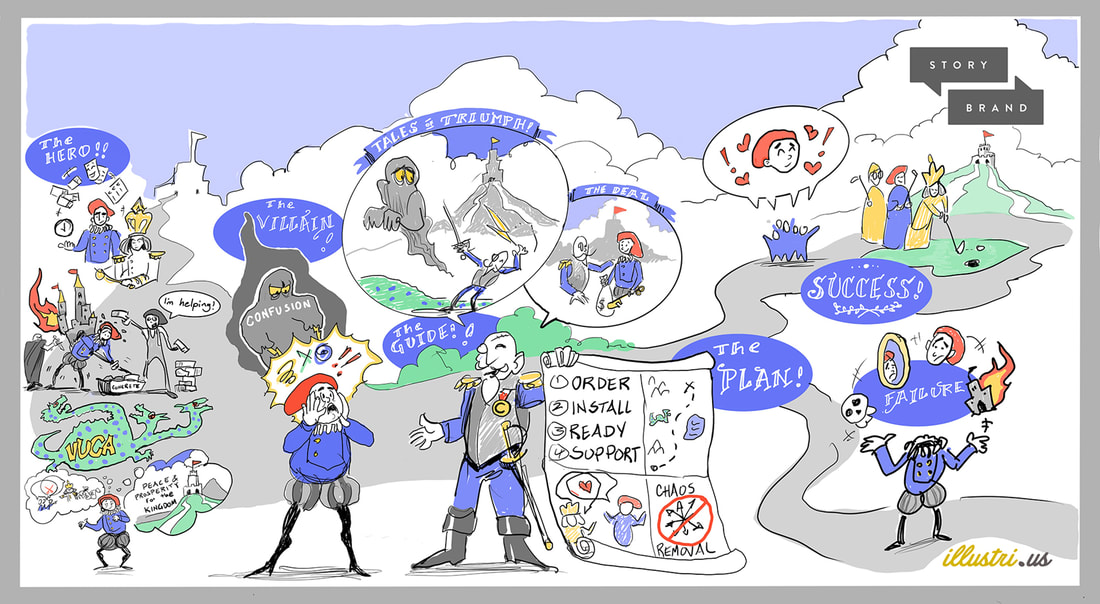|
Guest post by Ashley Preston
You only have six seconds to capture someone’s attention. It is a busy world out there and you’re competing against all of it. Information is constant in today’s day and age, and it is always coming at us. So how do you get people to look up and listen through all the noise? How do you get them to click on the link? How do you get them to care about what it is you’re saying? I spent a lot of time in newsrooms writing the promos and teases that kept viewers tuning in and clicking articles, and I can tell you there are a lot of ways to do it – with some ways proving to be more effective than others. These are the best techniques newsroom writers use to get you to look up, click the link, and see what they have to say. First Thing First The single most important thing you can do is create content that has value. None of these tips matter if you’re pumping out bullshit that has little to no value to your audience. If you don’t understand or care about what you’re writing about, there is a good chance your clients won’t either. Make sure what you’re writing about is worth the paper (digital or otherwise) it’s written on. Make sure you clearly understand what the objective of your information is, and how it helps your customers. Knowing the value you're providing makes it easier to show others why they should take time out of their busy days to consume your content. Sure, you can write bad content with interesting teases that get people to click or listen, but you can only do that so often before you lose credibility. Now that we’ve gotten that important disclaimer out of the way, here’s how you capture the attention of your readers or viewers with gusto. Imagine This Scenario Imagine a scenario where a family’s house burned down right before Christmas. The family got out safely after a daring escape through a second-floor window, but now they don’t have a home or any presents to give to their children for the holiday. The Red Cross is helping, and a local charity is collecting Christmas donations. The reporter covers the story – talking to the family about the fire, their escape, and the overwhelming sadness they feel when they think about Christmas morning. The reporter then talks to the organizations helping the family get back on their feet and have a good holiday. The goal of the reporter’s story is to let the community know that the family is devastated by their loss, feels lucky to be alive, and that the public can still help make the holiday a little brighter for them. There are several ways you could write headlines and teases for this type of story. 1. Call to Action People react when there is a way to positively respond to information that upsets them. In this instance, you would let the community know that they can do something to make this situation better. Oftentimes people feel helpless, especially in the face of bad news, so when people realize they can help, they will. A tease like this would focus on letting people know there are steps they can take to make things better for the family. Example: “A local family barely escapes a fire that destroys everything they own days before Christmas; how you can help make sure that their holiday is still a festive one.” 2. Important / Interesting Facts People love a good story, and we are drawn to shocking information. While it is always important to lead with the most relevant information, it is also a wonderful way to turn someone’s head. These are the facts that people will remember and make people care; use that to your advantage. A tease like this would likely focus on the family’s escape and the community outpouring that quickly came in. Example: “They barely escaped with their lives; a local family jumps from their second-story window to save themselves from a fire days before Christmas – what the community is now doing to help.” 3. Emotional Story This is, without question, the most powerful tease element you can include. Most people are caring and can relate to the pain of others. It’s why I can’t hear Sarah Machlachlan’s 1999 hit “Angel” without thinking about dogs in cages. It is why music stirs us like it does. We are moved by raw emotion. Emotional statements from people directly impacted by the situation stay with you. They help us empathize better with people. They encourage us to act. They help us better connect with ourselves and with others. If you can use an emotional tease, the general rule is do so, because you will usually see results. In this scenario, a professional writer would lead with a statement from the family, something talking about how both grateful they are to be alive, but sad that their children will have nothing, along with information that the community can still help. Example: “We are so grateful we made it out safely, but I still don’t know how we are going to tell the kids that Santa won’t be coming this year – what the community is doing to help a family who barely escaped a devastating house fire right before Christmas.” Ponder This When Writing Headlines and Teases All these techniques can be used together – a fact and the emotional toll it took on you, a fact with an action you can take, a brutal emotional plea and action you can take, etc. but make sure you factor in at least one of these elements. When writing out your headlines and teases, ask yourself:
If you’re looking for more help getting your content strategy in the right place, or improving your internal communication, let us know. We are a group of business coaches (with a background in media and journalism) who are here to help you clarify your ideas, articulate your message, and execute your mission. We would love to help you show the world that what you’re doing matters.
0 Comments
by Ashley Preston
Knowing how to clearly articulate your company’s mission is critical when trying to connect with your audience - be it customers, potential employees, or investors. The mission statement is designed to describe a business’s purpose and help distinguish it from its competitors. It outlines places of potential growth and provides team members with common goals. In his book, Business Made Simple, Donald Miller writes, "Teams that are not united around a compelling mission waste time, energy and money moving in random directions that do not serve the overall objective of the organization.” He continues, “A leader who can help a team define a mission and who can remind the team daily of what the mission is and why it matters is a valuable gift to the organization." There is an art to crafting the perfect statement that is easy for you and your team to adopt. Here are three techniques to help you develop the impactful language you need to make a statement to the world. Explain Who You Are and Why You Exist Make sure you can clearly say who you are, what it is you do, and how it helps the client or customer. Lay out what main services you offer and define who those services are meant to serve. Explain why your offerings are valuable. Why should someone want what it is you are offering? Make sure you are specific. It will make you more memorable and help you find the right customers and team members for your business. If you can clearly explain what you do and what someone can expect when using your services, you are more likely to end up with happier customers and satisfied employees. Inspire Yourself and Others All choices should be grounded in reality - but mission statements can be a powerful tool in inspiring those who hear them. It can serve as an encouragement to team members who are working with you to implement your solutions. For instance, Patagonia says in its mission statement that it aspires to “build the best product, cause no unnecessary harm, and use business to inspire and implement solutions to the environmental crisis.” While the company is not promising to solve all the world’s problems, it is promising to do its part to make responsible apparel and help save the planet. Staff members and consumers realize through a statement like this that the company supports environmental causes, and by supporting them, they are also doing something small to help that cause. There is a reason you started doing what you are doing. Make sure you can demonstrate how that mission can grow to better others and the world we live in. Be Punchy to Be Memorable Mark Twain once said that he sent a long letter because he did not have time to write a short one. While there are companies with mission statements that are paragraphs long, the best mission statements are ones that you could easily speak out in a sentence or two. It makes it easier for employees to relay and for customers to remember. Using the right language becomes crucial in that case. Every word needs to be chosen for maximum impact and understanding. Try to be as concise as possible. If it is lengthy, pare it down to sharpen its delivery. Once you have it in a place where you feel like it is short and sweet, make sure that the message is consistently used across all platforms and that the team is aware of the changes. Explain the value of aligning company actions with the mission’s intent – a mission statement is most effective when everyone is on board. It is worth taking the time to develop a relevant, impactful mission statement. It serves as a reminder of why you founded your business and where you are headed. It is the kind of language that can guide you and motivate your team for years to come. If you need help getting yours in the right place, let us know! Our experts can help guide you through the creative process and arrive at a mission statement that beautifully and efficiently describes your value and the impact of your work. When I use the customer journey mapping process to aid clients in their sales and marketing efforts (i.e. a framework like StoryBrand), we place their ideal client in the center of the story.
They are the hero and protagonist who has embarked on a quest to solve their problems (internal, external or philosophical). We identify a villain — someone or something that stands in their way and thwarts their progress at every turn. And, we are their guide (Yoda, Gandalf, The Scarecrow or Glinda the Good Witch). When they finally overcome this villain to claim ultimate victory and the gift of achievement, we have helped them up the mountaintop and filled them with the power and confidence to stand with one foot on the belly of the dragon and hold their sword to the sky. To move our potential customers from the safety and warmth of their hearth and up this treacherous mountainside, we may feel the need to shy away from such polarizing language when addressing them. We might think they need to be gently coaxed into a place of safety — lured into a cave and given the plan or solution in secret. In reality, our hero has been waiting for years for someone (a guide) to come along that has the courage to speak to her in such polarizing language — a language that draws a stark relief between what she’s afraid of and what’s truly at stake and what she stands to win. Identifying the villain — and what success will look like — allows us to plug simple, yet mythic and powerful words into formulas like the ones below that speak directly to the heart of our ideal client. The formulas are quite simple. Formula 1: Kill / Claim - This one uses the “k” sound to create an alliteration. The inputs should be short and use rhyming and/or rhythm to create a brief, memorable statement. Formula 2: Slay / Step Into - This one relies on the “s” sound and uses the mythic term “slay” in place of “kill.” Here are a few case studies, based on some of my past sessions: Example #1 A corporate innovation company that helps other businesses think ten steps ahead. They have identified as their villain the “Prime Movers” — those who are first to market. Their success looks like a prominent place in their chosen market segment. For them: Slay the competition. Step into your position. Example #2 A sales-based insurance company whose villain is the gray, shadowy, “big bad wolf” that threatens the safety of the community. Success looks like them being perceived as the trusted advisor, providing safety and shelter through the mitigation of risk. For them: Kill your monsters. Claim peace of mind. Example #3 A coaching program that encourages therapists to leave behind the clinical 1:1 practice model, become entrepreneurs and launch a group coaching business. The villain that terrorizes their (primarily female) protagonist is self-doubt and the fear of the unknown. Success looks like the fulfillment of a career they knew they were destined for. For them: Slay the unknown. Step into the light. Or, more boldly, and my favorite: Kill your fears. Claim your future. Copy like this is perfect for headlines in blog or social posts, webinar or workshop titles, or display ads. It serves to address their needs/pains and immediately begins to position you as the guide who is empathetic and demonstrates the authority to lead them on their quest. You can start today by using more bold, direct language with your potential customers. Watch how they react and respond. Measure how much faster they move up the mountain. And let me know the results. If you’re interested in what a StoryBrand or business coaching session can do for you, e-mail me at [email protected] to schedule a discovery call. |
Details
ABOUT THE AuthorJoran Slane Oppelt is an international speaker, author and consultant with certifications in coaching, storytelling, design thinking and virtual facilitation. Archives
March 2024
Categories
All
|




 RSS Feed
RSS Feed